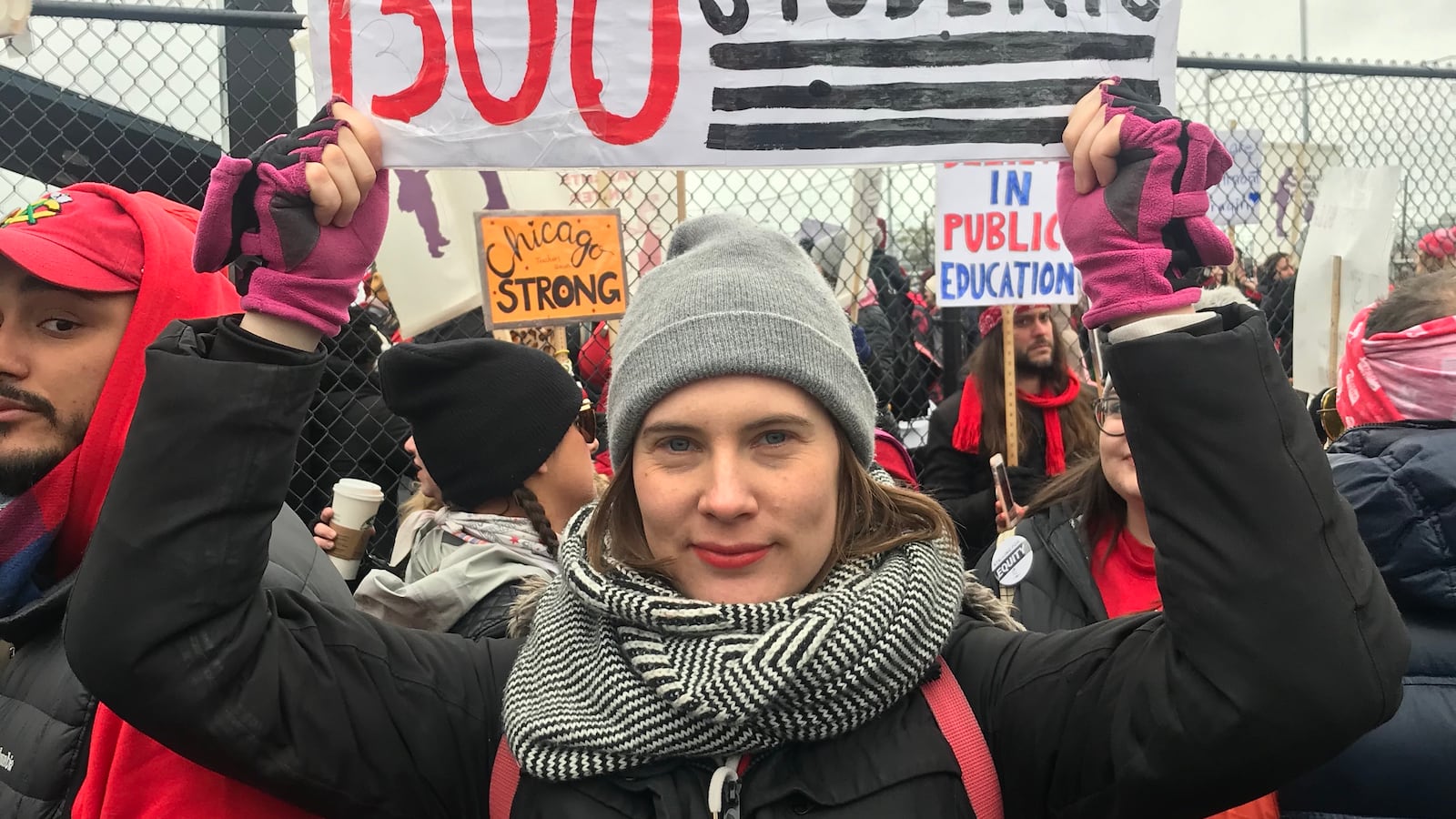
When I first told social work colleagues that I was planning to work for Chicago Public Schools, I received mixed reactions. While some of my peers and mentors were excited, many coupled their congratulations with words of caution about working in the third-largest district in the country.
District veterans told me about the limited resources and high caseloads that made their jobs difficult and at times filled with ethical dilemmas. Classmates told me that those issues caused them to seek work elsewhere, even though the city’s school district offers higher pay than many of the local charter networks and neighboring districts.
Now that I am on the ground, working in two schools, I can see that the challenges are very real. I can also see that investments by the city are beginning to pay off. And I can see that more will need to change if Chicago Public Schools is to become a desirable employer for social workers.
School social workers in Illinois are charged with conducting individual and group therapy; aiding in crisis support; participating in school-wide student support initiatives; and working essentially as a designer for students’ Individualized Education Programs, federally mandated documents that secure appropriate modifications, accommodations, and therapies for students with disabilities. But while most school social workers day-to-day take on some combination of those activities, the exact responsibilities can be drastically different depending on where they work — something that Chicago Public Schools social workers get no say in.
As a strengths-based clinician, let me start with the positives. I am proud to be a new clinician with Chicago Public Schools. I chose to work for Chicago Public Schools because I strongly believe in public education and want to be a public servant in the city that I love. Despite all the things that are challenging about being a social worker, I love my job and am inspired by all the students I have the privilege of serving. I have felt fully supported by my social work administrator whenever I have needed help working through the often messy problems that define the social work profession.
What’s more, it is an exciting time to be with Chicago Public Schools, considered one of the fastest-improving districts in the nation. The district and city have pledged to hire hundreds more social workers, and movement towards addressing racial inequity gives me hope for the future of the district. I hope to contribute as a clinician in seeing these ideas through to fruition.
But there are also very real areas that need improvement, in part because no two schools are the same. Depending on your school, the varying school- or district-wide initiatives might limit or expand the scope of your work; building politics might make it easier or more difficult to build professional learning communities; and the ideological orientations of the school might set up learning conditions that create identity-affirming, trauma-informed, or punitive school cultures. Depending on where you work in our highly segregated city, you will find yourself supporting students from different racial and ethnic groups and working with heterogenous or homogenous school populations. And schools and neighborhoods all have various levels of social, political, cultural, and fiscal capital that contribute to the wide range in the quality of education across the Chicago area.
That might be OK — except that in Chicago Public Schools, you go where you’re sent. Social workers are employed by the district’s central office and deployed across the city based on a mysterious allocation equation that no one seems to fully understand. In contrast, social workers who work for charter schools or suburban districts are hired by the school rather than the district. They interview directly with the school administrative and clinical staff to see if the school is a good fit for their “flavor” of school social work.
This is important because as clinicians, we all use different theoretical modes to conduct our therapeutic work. If you are a trauma-informed clinician, this might influence your decision to work for a school that utilizes a trauma-informed approach rather than punitive no-excuses policies. On the flip side, if you are a trauma-informed clinician that wants to work on changing school climate and culture, then working within a more punitive system that is looking to shift policies might place you exactly where you want to be. Without any say in where you are placed, it is impossible to figure out whether you are a good fit for your school.
Many of my classmates’ concerns with working for Chicago Public Schools come down to our high caseloads. The National Association for Social Work recommends a social worker-to-student ratio of 1:250, but the average ratio in the district is much much higher. It is important to note that the district has been moving in a positive direction: This year it hired a large cohort of social workers, lowering caseloads across the city. Now, instead of overseeing services at two or more schools, social workers mostly work in two or fewer schools, and some schools have multiple social workers.
Yet this shift is far from uniform. I myself am placed in two schools totalling roughly 1,300 students, while I have colleagues who are assigned to only one school, with smaller caseloads than I carry at just one of my schools. I take my role as an advocate for students and their families very seriously, understanding that our role as advocates do not end when we are not in the building. Bouncing between schools, I am forced to leave my schools and students without therapy and support to manage behavioral health crises. Personally speaking, the lack of control and the high caseloads are anxiety-producing, and on bad days, for many of us working in schools, the job can feel impossible. I find myself wrestling with the limited scope of my work and a fear that students who need social work support will slip through the cracks.
All of this is to say that working with Chicago Public Schools requires social workers to forfeit a decent amount of control and agency and be willing to take on the ethical dilemmas that come along with large caseloads. For many of my colleagues, avoiding these issues was worth more than the $10,000+ pay increase they might get for working for the district.
Because I understand why so many social workers choose to practice elsewhere, I also understand why the Chicago Teachers Union is pressing for broad changes in writing through the contract negotiation process. To address pay only would leave teachers, clinicians, and school support staff in the same compromised working and learning conditions as before, albeit with slightly more compensation. This is not enough for us, or for the city’s students which is why so many of the union’s demands are focused on improving the quality of education and clinical services in Chicago Public Schools.
When the strike ends, I will be eager to return to my Chicago students and my schools. I will do so hoping that my union has won changes that mean that in the future, social workers like me have the resources they need to work with the lift up the school communities of my beloved city. For now you can find me on the picket line.
Elizabeth Weiss is a teaching artist and school social worker for Chicago Public Schools. She graduated from the University of Chicago, School of Social Service Administration in 2019 where her research interests included the intersections of equity, trauma, healing, and creative processes in educational contexts.
About our First Person series:
First Person is where Chalkbeat features personal essays by educators, students, parents, and others trying to improve public education. Read our submission guidelines here.

